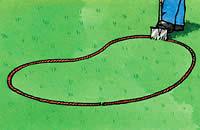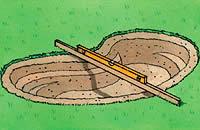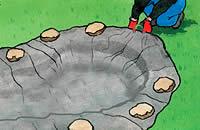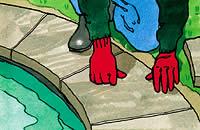The easiest way to determine the size and shape of your pond is to lay out the shape on the ground using a length of rope or hosepipe.
Try to position the pond so it is sheltered from cold prevailing winds and receives sunlight for at least half the day. Where possible avoid overhanging trees as their leaves and blossom will fall into the pond.
Also avoid areas where surface water tends to collect, or areas with a high water table as this could push up under the pond liner and create problems.





